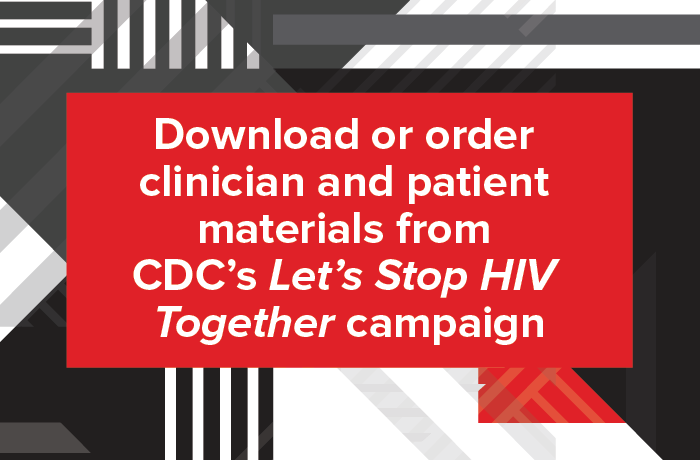Pre-Exposure Prophylaxis (PrEP) and Post-Exposure Prophylaxis (PEP)
PrEP is a prevention method used by people who are HIV-negative and at high risk for being exposed to HIV through sexual contact or injection drug use. When someone is exposed to HIV through sex or injection drug use, these medicines can work to keep the virus from establishing an infection. Read frequently asked questions about PrEP.
PEP refers to the use of antiretroviral drugs for people who are HIV-negative after a single high-risk exposure to stop HIV infection. PEP must be started as soon as possible to be effective – always within 72 hours of a possible exposure – and continued for 4 weeks. Read frequently asked questions about PEP.
Conversations about PrEP and PEP
For patients with HIV, sharing information about PrEP and PEP for their sex and drug injection partners without HIV can help prevent transmission. Health care providers can also offer to facilitate the conversations or identify providers who may be able to offer PrEP and PEP to partners.
- “What do you do when a condom breaks?”
- “What do you find works or doesn’t work when you talk with partners about HIV prevention medicines, like PrEP, they could take?”
- “When you party, are you injecting drugs? If so, are you sharing needles or drug preparation equipment with anyone?”
PrEP vs. PEP – Injection Drug Use Transmission
There are insufficient data about PEP’s effectiveness to prevent HIV infections from nonsterile injection drug use. For persons who inject drugs and experience many exposures, PrEP is likely to be a better prevention strategy than PEP.
Additional Clinical Resources on PrEP and PEP
Reports
- Estimated Percentages and Numbers of Adults with Indications for Preexposure Prophylaxis to Prevent HIV Acquisition — United States, 2015, Morbidity and Mortality Weekly Report (MMWR)
- Increased Medicaid Prescriptions for Preexposure Prophylaxis Against HIV infection — New York, 2012–2015, Morbidity and Mortality Weekly Report (MMWR)
CME
- Continuing Education: Advancing PrEP in Practice: Practical Strategies for Everyday Challenges
- Continuing Education: Preventing HIV Infection in the Primary Care Setting: The Role of Pre-Exposure Prophylaxis (PrEP)
Patient Education
- Flyer: Paying for PrEP [PDF – 299 KB]
- Fact Sheet: Truvada Medication Information Sheet for Patients [PDF – 187 KB]
- Brochure: Now’s the Time To Find Out About PrEP
- Brochure: Taking PrEP – A Daily Pill to Reduce Your Risk of Getting HIV
PrEP Consultation Service for Clinicians
1-855-448-7737 (1-855 HIV-PREP)
11 a.m. – 8 p.m. ET , Monday-Friday
For more information on the services offered through the PrEPline, visit the National Clinicians Consultation Center.
11 a.m. – 8 p.m. ET , Monday-Friday
For more information on the services offered through the PrEPline, visit the National Clinicians Consultation Center.






















.png)












No hay comentarios:
Publicar un comentario